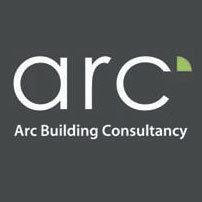Understanding Health and Safety in Construction
When construction work is taking place, all individuals involved including directors running the business, site managers and supervisors, and those responsible for construction work, have to be aware of health and safety regulations and individual responsibilities.
There are specific steps that should be followed to ensure compliance with health and safety regulations and to safeguard the wellbeing of individuals on site, as well as to ensure the successful outcome of the project and its viability in the long term.
From the actions that need to be taken prior to the start of a project, to the various requirements and regulations that should be considered throughout the construction phase, we have outlined everything you need to know below.
The planning stages
Before the project begins, it is necessary to gather information regarding the site and its surroundings, with particular attention being given to:
- Whether any contaminants such as asbestos may be present
- The ground conditions
- Power lines and underground services
- Schools or railways nearby
Planning ahead to account for these specific circumstances will help ensure the project runs smoothly and efficiently once up and running, avoiding potentially costly delays and emergencies. Health risk assessments can be particularly helpful in establishing what precautions need to be taken to eliminate risks.
Making sure that everyone involved in the project has the required skills and qualifications is of utmost importance, so that if additional training is needed, this can be provided in time, and without the project being compromised.
When setting up a construction site, it is vital that:
- Safe access to the site is guaranteed for both people and vehicles
- The site is suitably fenced off, with appropriate signs present
- Proper emergency routes and exits have been identified
- First aid equipment, facilities and trained personnel are available
- Designated storage areas are prepared in order to store hazardous materials, building materials and waste so that walkways and stairways are clear of them
- Welfare facilities are made available to all staff
During construction
When working on site, there are a plethora of hazards that can result in serious injury or death, and taking appropriate precautions, as well as having an in-depth knowledge of the circumstances that could lead to accidents, is instrumental in preventing these.
Management and supervision play a key role in ensuring healthy working conditions are maintained throughout the duration of a project. It is often supervisors’ and managers’ responsibility to ensure, for instance, that everyone visiting site for the first time is briefed about potential risks and knows how to act in potentially dangerous situations.
When it comes to workers, enforcing the use of personal protective equipment is vital, particularly to prevent occupational health risks such as those resulting from lifting heavy loads, slips and materials falling. However, further precautions are necessary to prevent damage caused by the use of specific pieces of equipment such as vibrating tools, and from exposure to loud noises and harmful substances.
Potential hazards that should be suitably controlled with individual health and safety processes include:
Working at height
The right control measures should be enacted to prevent falls by making sure the right equipment is available, and that this has been properly inspected and is fit for use.
Groundwork
Excavation and other groundwork operations such as micro-tunnelling and drilling can result in nearby structures being damaged, surface water inflow, damage to underground services, hazardous fumes, collapse of the sides and falling materials. Each of these risks need to be individually managed with relevant procedures.
Vehicle traffic
Vehicle movements should be closely monitored to ensure suitable routes are identified that take into account the presence of pedestrians or other vehicles, where applicable. Additionally, drivers and signallers should be adequately trained to perform relevant tasks.
Demolition and structural alteration
The expertise of contractors and individual duty holders such as structural engineers is often required to prevent accidents caused by building collapse, flying debris and falls from edges occurring, particularly where there are concerns regarding the building’s stability.
Materials being moved
To prevent accidents stemming from materials falling or being transported, whether manually or with vehicles, individual considerations should be observed that pertain to the ways in which the materials are transported, such as regulations regarding the use of specific vehicles including cranes, hoists, and lifts.
Working with electricity
The use of electrical equipment is notoriously particularly dangerous, as is the presence of overhead power lines. Receiving proper training and taking the appropriate precautions when working close to live equipment can therefore be lifesaving. Further, particular attention should be given to the positioning of mains equipment, as well as proper maintenance.
Complying with health and safety regulations
Having a keen awareness of and applying health and safety procedures and regulations to construction work is also necessary from a legal point of view, and failure to comply can have disastrous consequences.
Regulations such as The Management of Health and Safety at Work Regulations 1999 (MHSWR), The Health and Safety at Work etc. Act 1974, and The Workplace (Health, Safety and Welfare) Regulations 1992 as well as many others, outline specific standards that must be complied with across the UK, ensuring all construction work is equally regulated.
As Chartered Building Surveyors, our team can deliver valuable advice on a range of building-related matters, enabling our clients to make informed decisions. For more information regarding the services we offer and how we can help you, please visit: https://arcbuildingconsultancy.co.uk/


